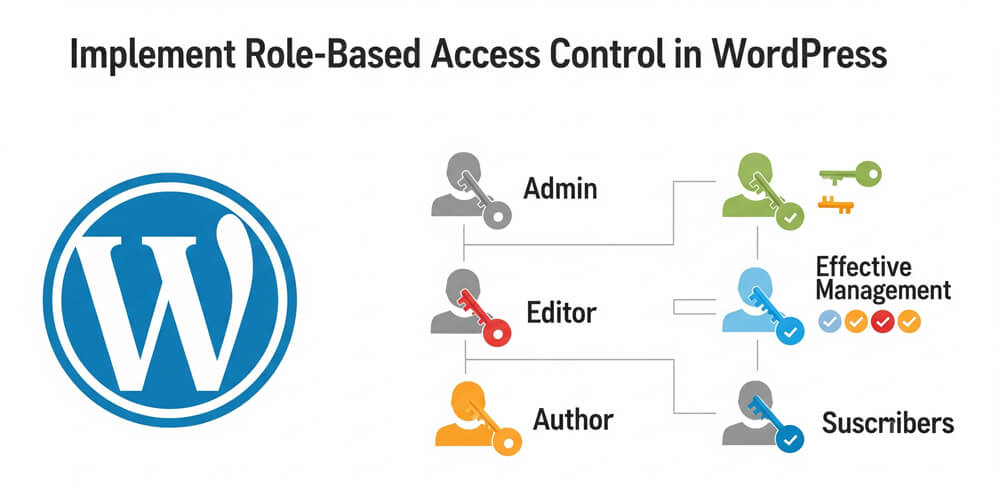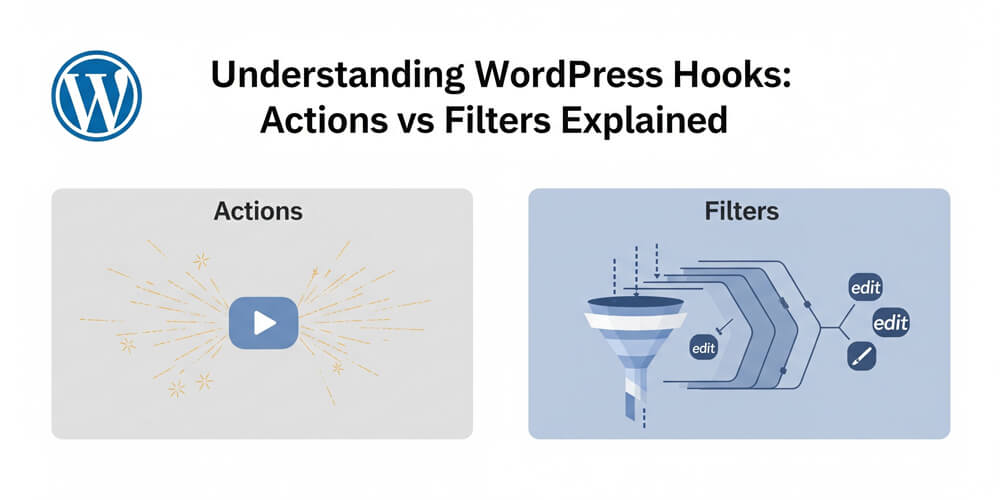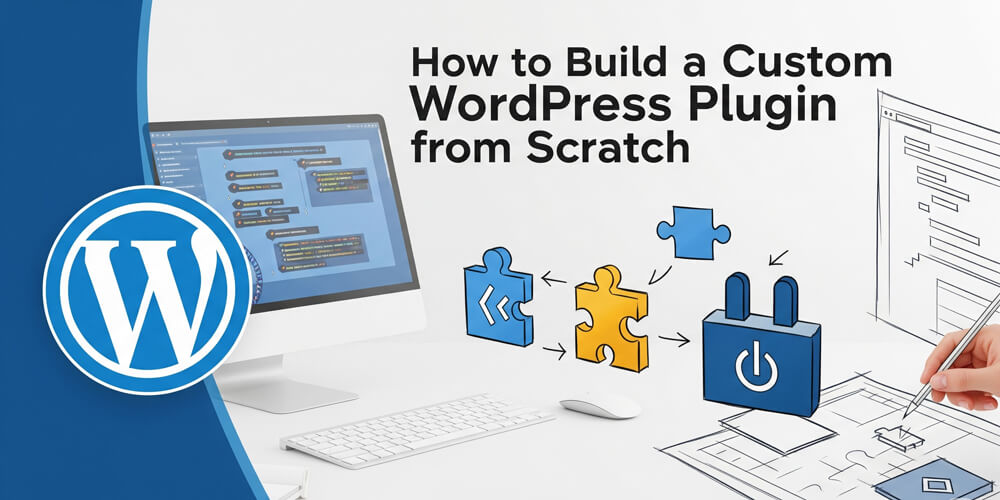WordPress offers several powerful methods for fetching and displaying content through query loops. Mastering WP_Query, query_posts(), and pre_get_posts is crucial for developers aiming to customize how posts are retrieved and shown on their sites. Each method serves a different purpose and comes with its own advantages and caveats.
- WP_Query is the most flexible and recommended way to create custom queries, allowing you to fetch posts based on virtually any criteria.
- query_posts() is an older function that modifies the main query but is discouraged due to its negative impact on performance and potential for causing conflicts.
- pre_get_posts is a hook that lets you efficiently alter the main query before it runs, making it ideal for site-wide or context-specific customizations.
In this guide, you’ll learn how each method works, when to use them, and best practices to ensure your WordPress queries are both efficient and maintainable.
Table of Contents
Open Table of Contents
The WordPress Query and The Loop
Before diving into specific query methods, it’s crucial to understand The Loop—the core mechanism WordPress uses to retrieve and display posts on any page. The Loop processes each post returned by a query, outputting content such as titles, excerpts, or full articles according to your template. It is the foundation of all WordPress content rendering, whether you’re displaying a list of blog posts, a single article, or custom post types.
At its simplest, The Loop checks if there are posts to display and then iterates through them, allowing you to control exactly how each post appears. Understanding how The Loop works is essential before you can effectively customize queries or modify how content is displayed. Mastery of The Loop enables you to build everything from simple blog listings to complex, dynamic layouts powered by custom queries.
Basic Loop Structure
The Loop is the heart of WordPress content rendering. It is a PHP construct that cycles through posts retrieved by a query and outputs them according to your theme’s template. Whether you’re building a blog, a portfolio, or a custom post type archive, understanding The Loop is essential.
It allows you to control exactly how each post is displayed, making it possible to create dynamic layouts and custom content structures. Before customizing queries or altering how posts are fetched, it’s important to grasp how The Loop operates and why it’s foundational to WordPress development.
if (have_posts()) :
while (have_posts()) : the_post();
the_title('<h2>', '</h2>');
the_content();
endwhile;
else :
echo '<p>No posts found.</p>';
endif;The loop uses the global $wp_query object to determine what content to display. Now, let’s explore different ways to modify this query.
WP_Query – The Flexible Query Class
WP_Query is the recommended and most flexible way to create custom queries in WordPress. It allows you to fetch posts, pages, custom post types, and even complex combinations of taxonomies, meta fields, and custom parameters. By instantiating a new WP_Query object with your desired arguments, you can run multiple queries on a single page, build custom loops for widgets or templates, and retrieve exactly the content you need without affecting the main query.
This approach is ideal for secondary loops, featured content sections, or any scenario where you need granular control over which posts are displayed and how they are ordered.
Example: Fetching the Latest 5 Posts
To retrieve specific sets of posts in WordPress, WP_Query provides a robust and flexible interface. By passing an array of arguments, you can control which posts are fetched, how they are ordered, and what content is included. This makes it easy to build custom loops for featured sections, sidebars, or any area where you need more control than the default query provides. Below is an example of how to use WP_Query to fetch the latest five posts.
$args = array(
'posts_per_page' => 5,
'post_type' => 'post',
'orderby' => 'date',
'order' => 'DESC'
);
$query = new WP_Query($args);
if ($query->have_posts()) :
while ($query->have_posts()) : $query->the_post();
the_title('<h2>', '</h2>');
the_excerpt();
endwhile;
wp_reset_postdata(); // Always reset post data after custom queries.
else :
echo '<p>No posts found.</p>';
endif;Key Features
- Allows querying custom post types, taxonomies, meta fields, and more.
- Must use
wp_reset_postdata()to prevent conflicts with the main query. - Supports pagination, custom ordering, and complex queries.
query_posts() – Avoid Using It!
The query_posts() function directly alters the main WordPress query, replacing the original query parameters with your own. While it may seem convenient for quickly changing which posts are displayed, this approach comes with significant drawbacks. Using query_posts() can cause unexpected behavior with pagination, disrupt compatibility with plugins, and introduce performance issues by forcing WordPress to run multiple queries on a single page load. As a result, its use is strongly discouraged in modern WordPress development. Instead, you should use WP_Query for custom loops or the pre_get_posts hook to modify the main query safely and efficiently.
Example of query_posts() (Not Recommended)
While query_posts() was once a common method for altering the main WordPress query, it is now considered outdated and problematic. This function directly modifies the main query, which can lead to unexpected results, conflicts with plugins, and issues with pagination. Understanding how query_posts() works—and why it should be avoided—will help you make better decisions when customizing your WordPress site.
The following example demonstrates its usage, but remember that there are better alternatives for most use cases.
query_posts('posts_per_page=5&orderby=date');
if (have_posts()) :
while (have_posts()) : the_post();
the_title('<h2>', '</h2>');
endwhile;
endif;
wp_reset_query();Why Avoid query_posts()?
- Replaces the main query, causing unnecessary performance overhead.
- Can lead to conflicts with pagination and other plugins.
WP_Queryorpre_get_postsshould be used instead.
pre_get_posts – The Best Way to Modify Main Queries
The pre_get_posts action hook allows developers to modify the main WordPress query before it is executed. This makes it the most efficient and reliable way to alter default queries site-wide or for specific contexts (such as archives, search results, or the blog homepage) without directly interfering with the global query object or causing conflicts with plugins and pagination.
By hooking into pre_get_posts, you can add or change query parameters—such as the number of posts displayed, post types, taxonomies, or meta queries—based on conditional logic. This approach ensures your changes are applied only where needed, keeps your code maintainable, and preserves compatibility with other WordPress features and plugins.
For example, you can use pre_get_posts to:
- Change the number of posts per page on the blog or archive pages.
- Include custom post types in search results.
- Filter posts by taxonomy or meta fields for specific templates.
- Exclude certain categories or tags from the main query.
Always use conditionals like is_main_query() and context checks (e.g., is_home(), is_archive(), is_search()) to target your modifications precisely and avoid unintended side effects in the admin area or secondary queries.
Example: Modify the Main Query to Show 10 Posts on Blog Page
The pre_get_posts hook is a powerful tool for developers who want to customize the main WordPress query without directly modifying core files or using less efficient methods. By hooking into this action, you can programmatically adjust which posts are displayed on the front end based on specific conditions, such as page type or user role. This approach ensures your changes are both targeted and maintainable, making it the preferred method for altering default WordPress queries in a scalable way.
function modify_main_query($query) {
if (!is_admin() && $query->is_main_query() && $query->is_home()) {
$query->set('posts_per_page', 10);
}
}
add_action('pre_get_posts', 'modify_main_query');Best Practices
- Always check
is_main_query()to avoid modifying admin or secondary queries. - Use conditionals like
is_home(),is_archive(), oris_search()to target specific queries. - Do not use
wp_reset_postdata()here, as this modifies the query before execution.
Comparison: WP_Query vs. query_posts() vs. pre_get_posts
To help you choose the right method for your WordPress queries, here’s a quick comparison of the three approaches:
| Method | Use Case | Performance Impact | Best Practice |
|---|---|---|---|
| WP_Query | Custom queries outside main loop | Moderate | ✅ Best for secondary loops |
| query_posts() | Modifying main query (Deprecated) | High | ❌ Avoid using it |
| pre_get_posts | Altering main query efficiently | Low | ✅ Best for modifying default behavior |
Frequently Asked Questions (FAQ)
-
When should I use WP_Query instead of pre_get_posts?
UseWP_Queryfor custom queries in secondary loops, widgets, or specific sections of a page without affecting the main query. Usepre_get_poststo modify the main query globally or for specific contexts (like archives or search results). -
Why is query_posts() discouraged in modern WordPress development?
query_posts()overwrites the main query, can break pagination, and often leads to performance issues or conflicts with plugins. UseWP_Queryfor custom queries andpre_get_postsfor altering the main query. -
Do I need to call wp_reset_postdata() after using WP_Query?
Yes, after using a customWP_Queryloop, callwp_reset_postdata()to restore the global$postobject and prevent conflicts with other queries or template tags. -
Can I use pre_get_posts to modify queries in the WordPress admin area?
You can, but it’s best to avoid this unless necessary. Always check!is_admin()in yourpre_get_postscallback to ensure changes only affect the front end. -
How can I include custom post types in the main blog loop?
Use thepre_get_postshook, check for the main query on the blog home, and set thepost_typeparameter to include your custom post types. -
Can I paginate custom WP_Query loops?
Yes, you can paginate custom queries by passing pagination arguments likepagedand using pagination functions such aspaginate_links(). -
Is it possible to exclude specific categories from the main query?
Yes, withpre_get_posts, you can use$query->set('category__not_in', array(1,2,3));to exclude categories by their IDs. -
How do I display posts from multiple post types in a single loop?
UseWP_Queryorpre_get_postsand set thepost_typeargument to an array of post types, e.g.,array('post', 'custom_type'). -
Can I filter posts by custom fields (meta queries)?
Yes, bothWP_Queryandpre_get_postssupportmeta_queryfor filtering posts by custom fields. -
What’s the best way to modify search results in WordPress?
Usepre_get_postswith a conditional likeis_search()to adjust the main query for search results, such as including custom post types or changing the number of results.
Understanding how WordPress queries work is essential for optimizing performance and ensuring clean, maintainable code. Whenever possible:
- Use WP_Query for custom queries.
- Avoid query_posts() due to its inefficiency.
- Leverage pre_get_posts for modifying main queries efficiently.
By following best practices, you can ensure your WordPress site runs smoothly while maintaining flexibility in displaying content.




